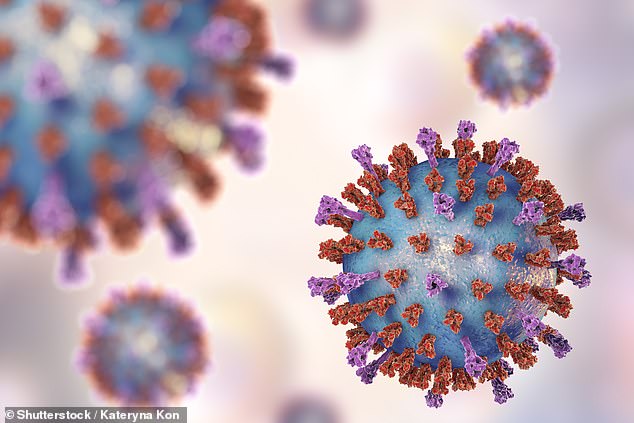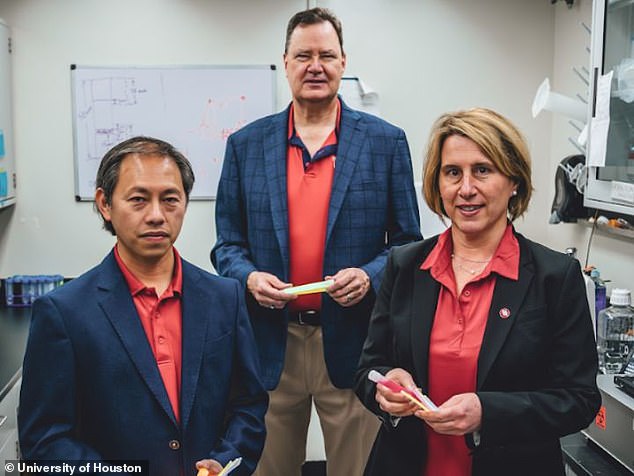US Navy tests rave glow sticks to detect biothreats in just 15 MINUTES
Glowsticks could shift from a purely American party favor to part of the US Navy’s arsenal to detect emerging biothreats.
Researchers at the University of Houston are developing diagnostic tests based on the glowing accessory to identify major viruses such as Covid-19, the flu and RSV – and the US Navy is reportedly planning a $1.3 million task order.
The vibrant light emitted by glow sticks illuminates nanoparticles of proteins or toxins that could become a biothreat, and it works in about 15 minutes.
These tests could revolutionize the way biothreats are identified and treated, providing a cheaper alternative to other rapid tests – which cost as little as $2 per box.

Researchers found that glow sticks can help identify biothreats, including major viruses such as RSV, Covid-19 and the flu
When a glow stick cracks, it releases hydrogen peroxide which reacts with chemicals stored outside the glass and illuminates bio-targets.
“Imagine a young person, probably in green camouflage, kicking in the door of a shed in rural Afghanistan or the US and entering what appears to be a makeshift laboratory,” Richard Willson, professor of chemical and biomolecular engineering, explained to Fox news.
“They’d like to gather information about what’s going on there or protect themselves and their teammates from something that could be quite bad,” and the glowstick tests could identify potential danger.
Dr. Binh Vu, an associate professor at the University of Houston, said he discovered that glow sticks could be used to detect biothreats while giving his two-year-old son a bath.
Son Vu played underwater with a glow stick and when he turned off the light, the “party favor” became very bright – and it was then that he realized that glow sticks “could be a very good recorder” for diagnostics.
Researchers developed lateral flow tests in which the liquid glow reagent from a glow stick was applied to a swab of an area.
The swab is placed in a cassette box before applying the reagent and then the cassette is placed in a 3D printed dark box.
Using an app on a camera or smartphone, researchers can detect and receive results within 15 minutes.
The app analyzes the test, which is ‘literally glowing’ and makes calculations before producing a positive or negative result, explains Dr. Katerina Kourentzi.

Researchers Binh Vu (left), Richard Willson (center) and Katerina Kourentzi (right) developed a glowstick test to identify emerging biothreats
“For the first time, we are applying the shelf-stable, low-toxicity and low-cost chemistry of common glow sticks to develop clear and rapid diagnostic tests,” Willson said.
The inexpensive nature of the test, combined with its accessibility, is what attracted the U.S. Navy, according to Kourentzi.
“The U.S. Navy is looking for deployable technology,” she said.
“So this seemed very applicable to their needs.”
The device could eventually become an essential part of the Navy’s toolkit to combat biothreats, such as entering an area where a military member could be exposed to potential toxins.
According to Kourentzi, the team plans to send prototypes to the US Navy for initial validation testing in the coming months.
The researchers hope to expand the glow stick’s capabilities to other serious diseases, and the University of Houston has already received a grant to begin testing glow sticks for HIV detection.
